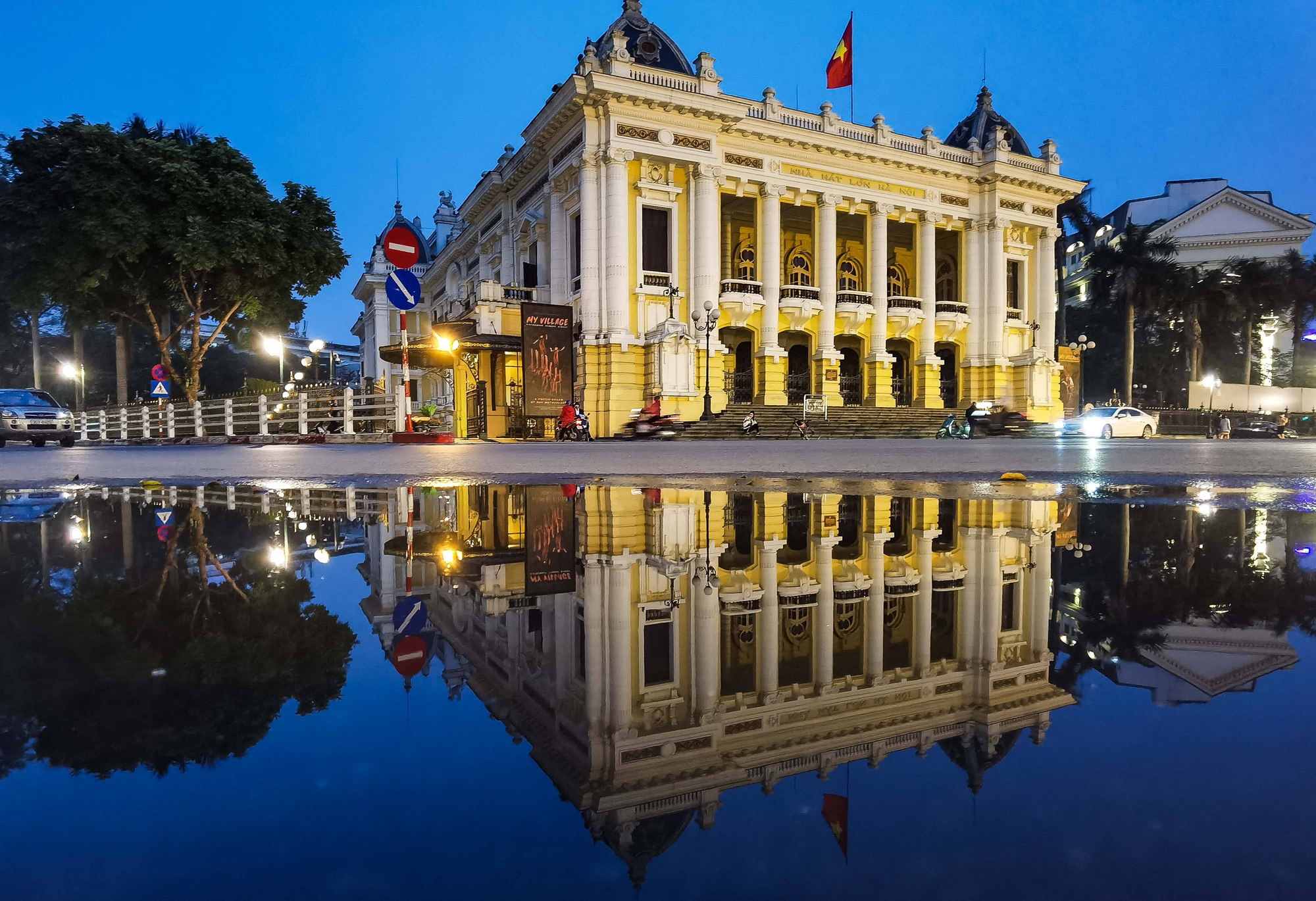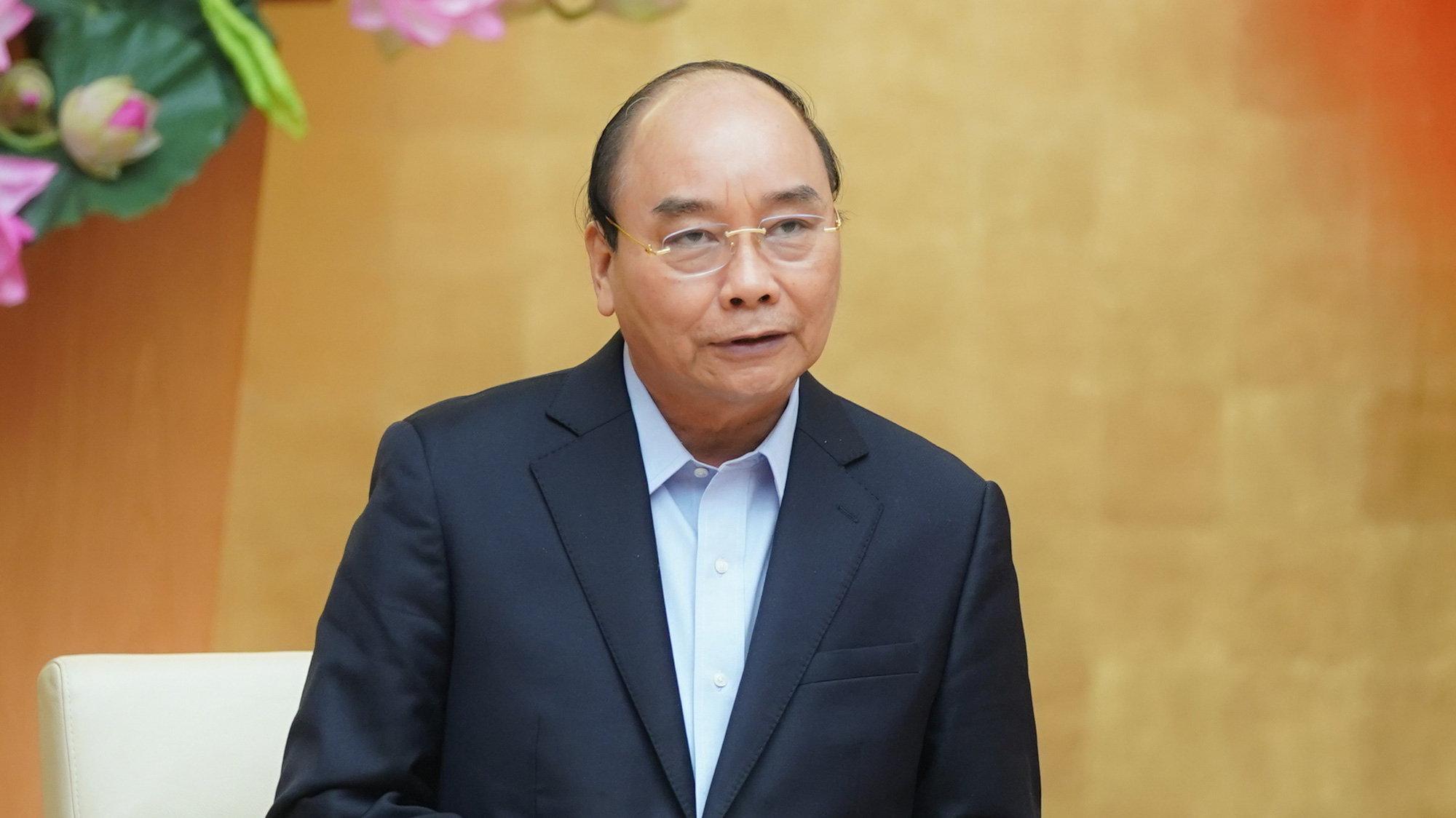Vietnamese Prime Minister Nguyen Xuan Phuc has highlighted the need to stay vigilant and uphold best practices while cautiously implementing measures to restart the economy in a new directive on measures to prevent and control the novel coronavirus disease (COVID-19) epidemic in the new context.
Directive No. 19 was issued on Friday, April 24, succeeding a previous directive released on March 31 that stipulated the nationwide implementation of social distancing.
“The [COVID-19] epidemic continues to have complicated development and the risk of outbreaks is still high, adversely affecting the economy, society and people's lives,” the PM said in the directive.
He noted Vietnam’s timely detection of cases and control of the spread of the disease over the three weeks of social distancing in April, keeping the death toll at zero while successfully treating the majority of infected patients.
Moving forward, effective implementation of measures to prevent and control the epidemic, restart and continue to develop the economy, and ensure social security and stability is needed, the PM stressed.
In order to achieve those goals, ministries and administrations at all levels are asked to be fully aware that “fighting the epidemic is like fighting enemies.”
The principles in preventing and controlling COVID-19 — detecting, isolating, zoning, and curbing — must continue to be upheld, and there is absolutely no room for negligence and complacency, the PM said.
The directive permits relaxing COVID-19 prevention and control measures corresponding to the development of the pandemic, as well as restarting socio-economic activities on the basis of ensuring effective control of the disease, especially in Hanoi, Ho Chi Minh City, and other major cities.
Residents are asked to wash their hands regularly, wear face masks while outside, maintain a safe distancing during social interactions, and avoid gathering in large numbers.
Festive activities, religious ceremonies, sports tournaments, and other crowded events continue to be suspended.
The suspension of non-essential businesses such as entertainment facilities, beauty salons, karaoke shops, massage parlors, bars and discos must continue.
Other commercial business services such as wholesalers, retailers, lottery ticket vendors, hotels, lodging establishments, restaurants and eateries, sports training centers, monuments and attractions can reopen but must practice epidemic safety measures.
The reopening of businesses and services falling into other categories is decided by the provincial or municipal chairperson of that locality, the PM said.
Intra-province and inter-province passenger transport activities can resume if safety measures are in place. Appropriate measures apply to air transport.
Schools must reduce the number of students in each classroom and arrange for students to attend classes at different timeframes to avoid large gatherings. Classrooms must be disinfected, and remote learning tools can continue to be utilized.
Factories and manufacturing facilities can continue or resume operations and must adopt epidemic prevention and control measures for all employees.
Immigration continues to be restricted, and arrivals from abroad must be strictly controlled and monitored.
The Ministry of Industry and Trade is tasked with preparing conditions for exporting to European countries as soon as COVID-19 lockdowns on those nations are lifted.
Plans must be made to gradually reopen domestic tourism and restart socio-economic activities while upholding principles on epidemic prevention and control, PM Phuc said in the directive.
 |
| The Hanoi Opera House in Hanoi is pictured during a COVID-19 social distancing period in Vietnam in April 2020. Photo: Nguyen Khanh / Tuoi Tre |
Risk-based requirements
Areas labeled ‘high-risk’ by the National Committee for COVID-19 Prevention and Control must continue to uphold measures outlined in Directive No. 16 issued by the prime minister on March 31.
The measures include banning gatherings of more than two people in public spaces, closing schools, stores, and entertainment venues, and limiting trips outdoors unless for absolutely necessary reasons such as for food, medicine, and emergency care.
Hanoi’s Me Linh and Thuong Tin Districts, and well as Dong Van District in the northernmost province of Ha Giang, are currently the only ‘high-risk’ areas in Vietnam.
The rest of Hanoi and Ha Giang, as well as the entirety of Ho Chi Minh City and the northern province of Bac Ninh, are ‘at-risk’ areas.
The remaining 59 Vietnamese provinces and cities are ‘low risk’, according to the committee.
For ‘at-risk’ areas, residents are advised against leaving their houses without preventive measures or gathering in groups of more than 20 people in public spaces.
Residents in ‘low-risk’ areas are told to avoid public gatherings of more than 30 people and encouraged to stay indoors.
Vietnam has reported 270 COVID-19 patients so far, with 50 remaining in treatment, including five patients testing positive again after their hospital discharges.
No deaths related to the disease have been reported in the Southeast Asian country.
 |
Like us on Facebook or follow us on Twitter to get the latest news about Vietnam!





















































